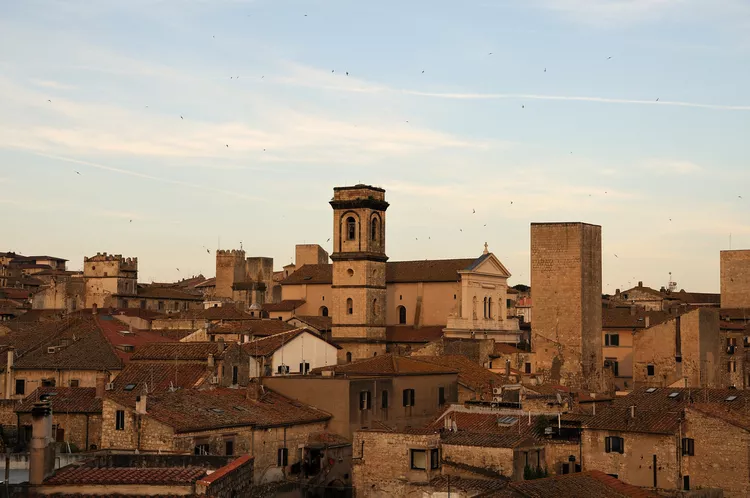Summary of Tarquinia
Ancient Tarquinia was one of Etruria’s most significant cities. Today, Tarquinia is renowned for being one of the best locations to explore Etruscan tombs, while also standing as one of central Italy’s UNESCO World Heritage sites. Visitors can enjoy an excellent archaeological museum boasting Etruscan artifacts along with an intriguing medieval center featuring the main piazza, Piazza Cavour. The cathedral showcases impressive frescoes dating back to 1508, and there are numerous churches to explore. Tourist information can be found in Piazza Cavour.
Tarquinia Location
Situated 92 km north of Rome and just 5 km from the coastline in the region known as Northern Lazio, Tarquinia is easily accessible. Visitors arriving by train can take the Roma-Ventimiglia line, connecting from Rome or other towns along the northern coast.
For those driving, take the route to Vetralla from the coast, and make a left at the sign for the Necropolis instead of heading into the town. Free parking is available on the road near the entrance, and from there, it’s a pleasant walk to the museum.
Tarquinia History
The Etruscans were Italy’s first sophisticated civilization, establishing settlements in what is now northern Lazio, Tuscany, and Umbria. Tarxuna, now known as Tarquinia, was among the 12 Etruscan cities. The town of Tarquinii later evolved into a Roman colony. By the eighth or ninth century, the town was entirely deserted, leading to the establishment of Corneto on the neighboring hill. The first recorded archaeological excavation in modern history occurred in Tarquinia in 1489.
Tarquinia’s Etruscan Necropolis
The Etruscan tombs are perched on a hilltop just outside the main town center. Approximately 6,000 tombs were carved into the soft volcanic tufa, with many adorned by vibrant frescoes. These paintings date from the 6th to the 2nd centuries BC. Visitors can typically access 15 tombs each day, showcasing different styles from various historical periods, making this location arguably the best collection of painted Etruscan tombs.
Visiting Tarquinia’s Tombs
Each tomb welcomes visitors with a descriptive sign and image at its entrance. Although navigating among the tombs is straightforward, be prepared for steep stairways leading to the artwork. Viewing the tomb paintings requires activating a light by pressing a button, which may necessitate bending down for a better view. Additionally, a snack bar offers refreshments.
Tarquinia’s Archeological Museum
The Museo Archeologico resides in the Palazzo Vitelleschi within Piazza Cavour, the main square of Tarquinia. Tickets are available that grant access to both the Necropolis and the museum for those eager to experience both attractions. The museum possesses one of Italy’s premier collections of Etruscan artifacts, featuring an exquisite array of terra-cotta winged horses from the 4th century BC, alongside Etruscan sarcophagi and statues.
More Etruscan Places Near Tarquinia
Norchia, located inland from Tarquinia, boasts tombs chiseled into the towering cliffs. While tomb access is free, it can be challenging to reach. Cerveteri, to the south along the coast, showcases a distinct tomb architecture, with its necropolis featuring a labyrinth of streets lined with burial sites from the 7th to the 1st century BC, including larger tombs designed like houses. Additionally, Sutri features an ancient Etruscan amphitheater. A bit further afield, Orvieto presents Etruscan sites alongside an archaeological museum rich in Etruscan discoveries.
More Sights in Tarquinia
Modern Tarquinia is a quaint town packed with medieval and Renaissance architecture, making it an intriguing destination to explore.




